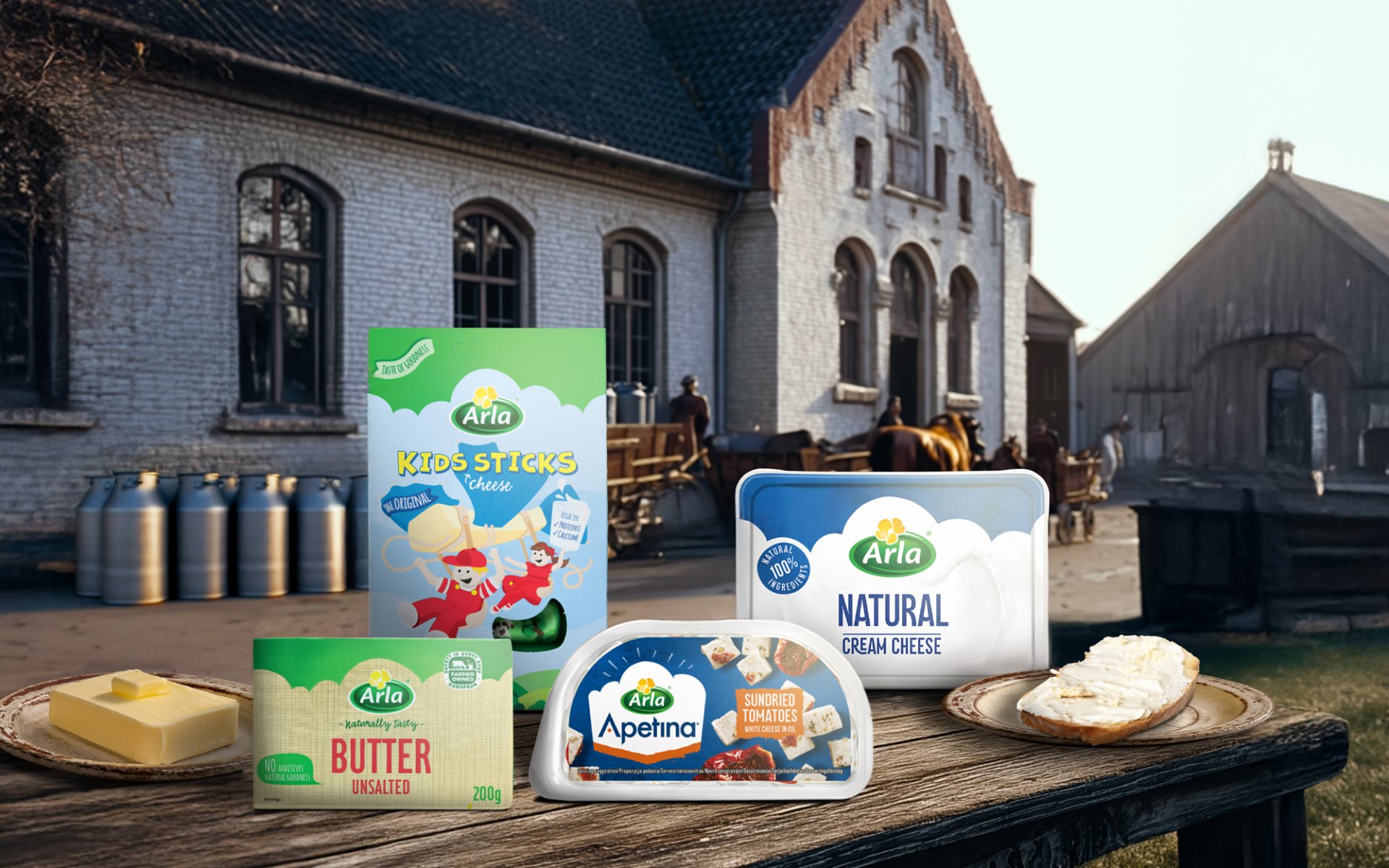Arla

Arla's Journey: From Farmers' Endeavor to Dairy Industry Leader
"Arla" is more than just a familiar dairy brand; it's a name that embodies a long and rich history of collaboration and dedication within the dairy industry. This global brand originated in Sweden before merging with a major Danish company. Today, Arla's headquarters are in Denmark, offering over 60 types of dairy products, with production facilities in 11 countries and products sold in over 100 nations worldwide. This success is no accident; it's the result of a vision focused on quality, mutual benefit, and sustainable development.
Humble Beginnings: The Genesis of Dairy Cooperatives in Scandinavia
Arla's story begins with the establishment of dairy farm cooperatives for collective production among various farms by dairy farmers in Scandinavia, particularly in Sweden and Denmark. Sweden's first cooperative, "Arla Mejeriförening," was founded in 1881 at Stora Arla Gård in the province of Västmanland. Just one year later, in 1882, Denmark's first cooperative, "Hjedding," was established in Ølgod, Jutland.
Forming cooperatives was a crucial step that led to higher quality raw milk products. Crucially, sales revenue was distributed equally among members, promoting widespread growth among farmers. Consequently, the establishment of cooperatives gained popularity and expanded rapidly over many years.
Challenges and Adaptations: Lessons from Sweden
While forming cooperatives brought numerous benefits, their independent expansion in Sweden led to problems. Intense competition drove product prices down continuously, and there were also issues concerning hygiene control.
This situation prompted the council in Sweden's capital, Stockholm, to consider government control over these producers. They appointed an advisory committee comprising expert farmers and major milk producers. However, the committee found these proposals unfair to ordinary farmers. They proposed a new approach: farmers should continue to manage production and distribution themselves, but within the framework of larger, stronger cooperatives.
The most critical goal was to enable individual milk producers to be more profitable through robust organizations. This would protect the interests of all parties, while consumers would benefit from order, reasonable prices, and reliable quality.
Consolidation for Growth: The Birth of Arla in Sweden
After several years of operation, the largest dairy cooperative association in Sweden was born in 1915, initially named "The Farmers' Milk Retail Association." It later changed to "Mjölkcentralen," or "The Milk Centre," in 1927, and finally adopted the name "Arla" in 1975. This name not only echoed the first cooperative but also belonged to the largest dairy retail store in Gothenburg. The consolidation of various businesses, including Stockholms Mjölkförsäljnings AB (dating back to 1880), as well as over a hundred smaller dairies, cream separation stations, dairy farms, and retail shops, helped reduce unfair competition and stabilize milk prices. By the end of the 20th century, Arla held a remarkable 65% market share in Swedish dairy products.
Danish Growth: The Power of Community Cooperation
Meanwhile, Denmark also experienced rapid growth in its dairy industry since the founding of the Hjedding cooperative in 1882. By 1890, there were as many as 1,700 small-scale producers, and numerous other cooperatives were established, modeled after Hjedding.
A key difference from Sweden was that the Danish government did not directly support the industry. Instead, citizens had to collaborate and manage operations themselves with individual capital to achieve collective prosperity. This fostered trust among local producers, making it easy to establish cooperatives or central organizations within each community. With an inclusive approach that welcomed members at all levels, distributed income proportionally to milk production, and shared responsibility for costs among all members, combined with new technologies and the import of new dairy cow breeds, the Danish dairy industry grew rapidly, primarily driven by small-scale producers.
From Crisis to Consolidation: The Emergence of MD Foods and the Arla Merger
However, from 1950 onwards, the industry faced an economic downturn, putting many small-scale producers in distress. Small producers and cooperatives began to merge, forming numerous larger companies. An organization was also established in 1972 to unite dairy companies and cooperatives from across the country, tasked with protecting the interests of private dairies and serving as a voice for these companies to the government.
In 1970, "Mejeriselskabet Danmark" (later renamed MD Foods) was formed through the merger of four major and three smaller producers. This company became the largest dairy product company in Denmark and played a significant role in developing the entire nation's dairy production industry.
After achieving overall economic success and company growth, MD Foods envisioned expanding into a global company. Consequently, in 2000, MD Foods merged with Sweden's Arla. This powerful alliance between two major companies from two countries brought maximum benefits to both parties, as well as to the dairy industry as a whole in each nation.Towards Global Leadership: Arla as a Worldwide Dairy Giant
Arla first began marketing in the United Kingdom, which remains the company's largest market to this day. Additionally, the company started acquiring and collaborating with related producers abroad, such as in Canada and China. After 2010, following successful exports to various continents worldwide, Arla began establishing international production bases, fully becoming one of the largest dairy product companies in the world.
Today, Arla's products prioritize environmentally friendly production and consumer health. Beyond fresh cow's milk, Arla offers a wide range of other dairy products, including cheese, butter, cream cheese, and yogurt, under various brands with distinct features such as organic products, high-protein milk, lactose-free options, and socially conscious initiatives like Farmers Milk, which donates 25 pence per bottle sold to dairy farmers, allowing consumers to support the vital labor force that forms the company's foundation.


